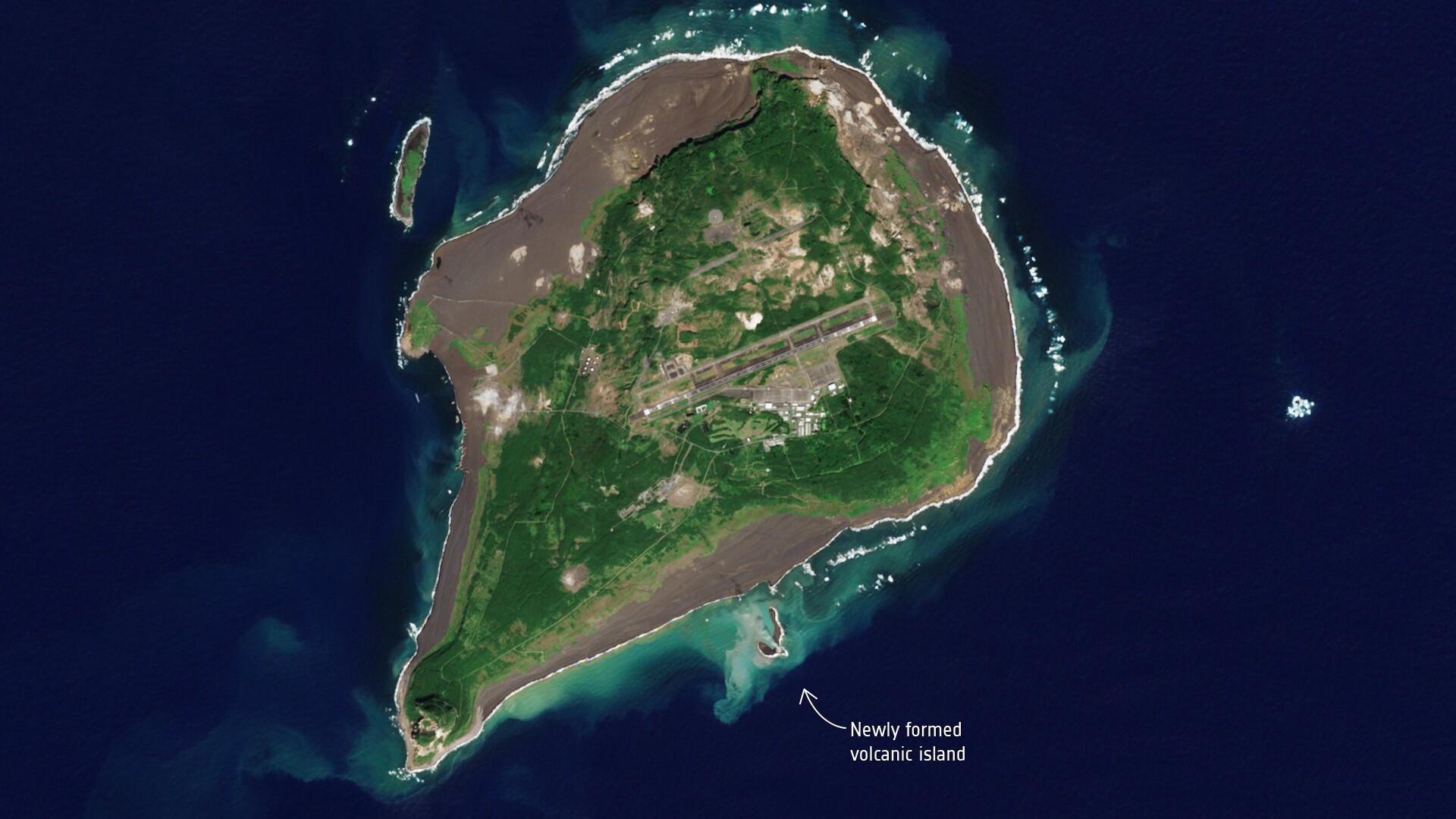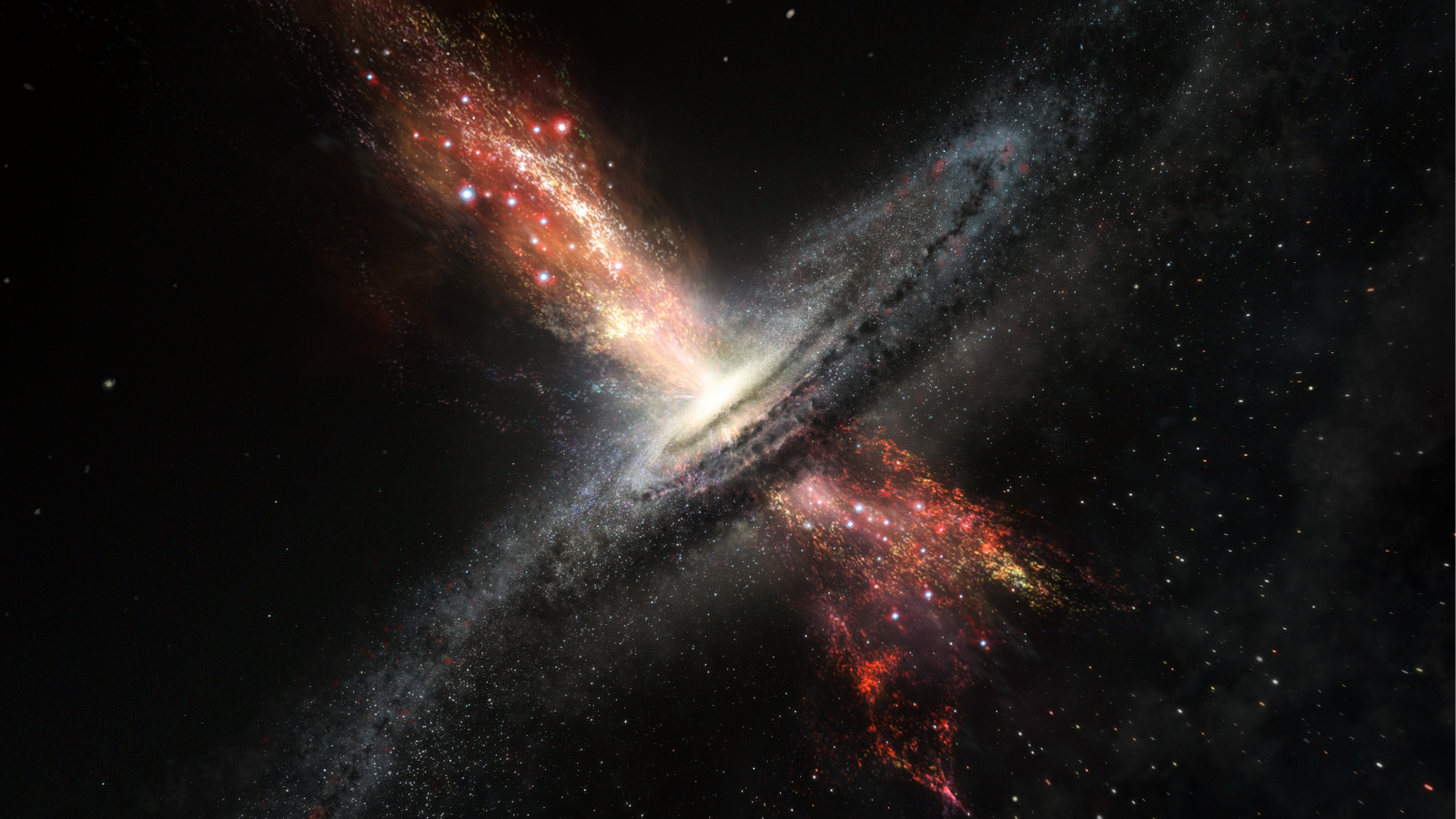Satellites watch as Japan's new volcanic island continues to grow (image)
The island forged in fire off the coast of Japan in Oct this year is still growing, as seen in a Copernicus Sentinel-2 image caught on Nov. 27.

A new image taken from space shows that an island forged in volcanic fire on the Pacific Seas off Japan at the end of Oct. 2023 is still rising from the sea.
The new volcanic island, which has been named Niijima — meaning "new island" in Japanese — was imaged by the European Space Agency's (ESA's) Copernicus Sentinel-2 satellite on Nov. 27. The continued growth of the island shows that the underwater volcanic activity that birthed the island off the southern coast of Iwo Jima is continuing.
The University of Tokyo said in a statement that the origins of Niijima can be traced to a volcanic eruption that began on Oct. 21, 2023. On Oct 30, between 12:20 and 12:35 local time, scorching hot magma from this volcanic activity met the ocean and exploded, forging rock chunks several feet long and launching them over 160 feet (50 meters) into the air.
As this volcanic rubble piled up and broke the sea 750 miles (1,200 kilometers) south of Tokyo, it created the island, was also imaged from space by the NASA/U.S. Geological Survey satellite Landsat-9 on Nov. 3.
Related: A volcanic eruption gave birth to a new island, and a NASA satellite saw it from space (photo)
Niijima has continued to be active since its violent birth. On Nov. 27, the Japan Coast Guard shared footage on its X (Twitter) account showing the island being rocked by a new volcanic eruption.
The video shows white steam and smoke pouring from the smoldering island before a massive explosion erupts from its bottom left limb. Following the blast, chunks of blackened volcanic rock followed by trails of smoke can be seen falling back to Niijima as the island is rocked by a series of smaller bursts. Despite these further explosions, the new image of Niijima seems to show the newly formed island will remain intact, at least for the time being.
Breaking space news, the latest updates on rocket launches, skywatching events and more!
Japan Meteorological Agency's volcanic division expert Yuji Usui told the Associated Press in early November that the survival of Niijima and the survival of the island could depend on the type of rock it is made from.
At the time, the sea was washing away the more crumbly rock around the island's outskirts, and volcanic activity had lulled, causing Niijima to shrink, contrary to the renewed volcanic activity and island growth seen on Nov. 27. If Niijima is made mostly of hardened lava it could be destined to stick around, whereas if it is lighter, more loosely bound rock it could be dispersed back into the Pacific.
"We just have to see the development, but the island may not last very long," Usui said.
Iwo Jima and its new island companion, Niijima, are located over a chain of underwater volcanoes that mark the so-called "Ring of Fire," a 25,000-mile (40,000-kilometer) horseshoe stretching from the southern tip of South America, running along the coast of North America, across the Bering Strait, past Japan, and down to New Zealand.
The 452 volcanoes and the underwater trenches, such as the Japan Trench, the Ryuku Trench, and the Middle America Trench that make up the Ring of Fire, are the result of the sinking of geological plates under the North American geological plate, through a process called subduction. This melts rock in the upper parts of Earth's mantle, creating magma that pushes back to the surface of Earth through cracks in the crust. This births volcanoes like the underwater examples erupting to create and grow Niijima.
The site of this new island has been a hotbed of underwater eruptions of steam and lava for many years, according to University of Toyko researchers, meaning that this region is host to one of the globe's fastest-rising caldera volcanoes, large depressions created when volcanoes erupt and collapse.

Robert Lea is a science journalist in the U.K. whose articles have been published in Physics World, New Scientist, Astronomy Magazine, All About Space, Newsweek and ZME Science. He also writes about science communication for Elsevier and the European Journal of Physics. Rob holds a bachelor of science degree in physics and astronomy from the U.K.’s Open University. Follow him on Twitter @sciencef1rst.

